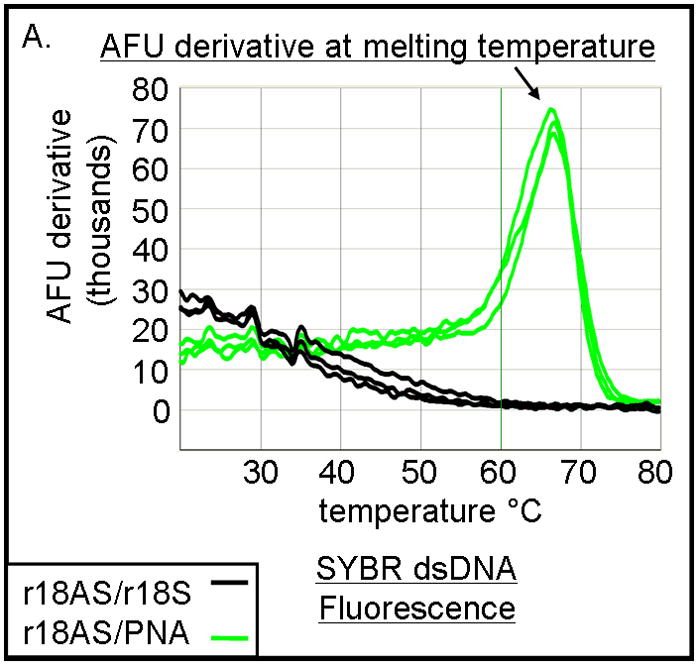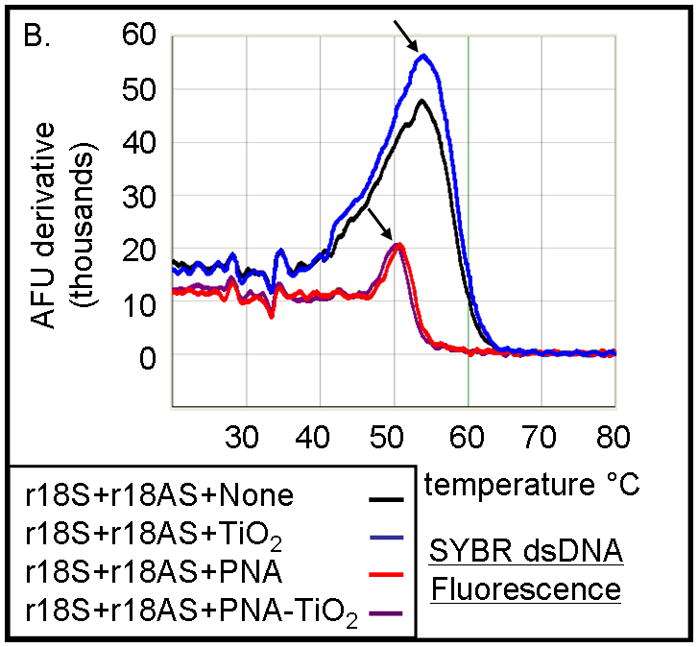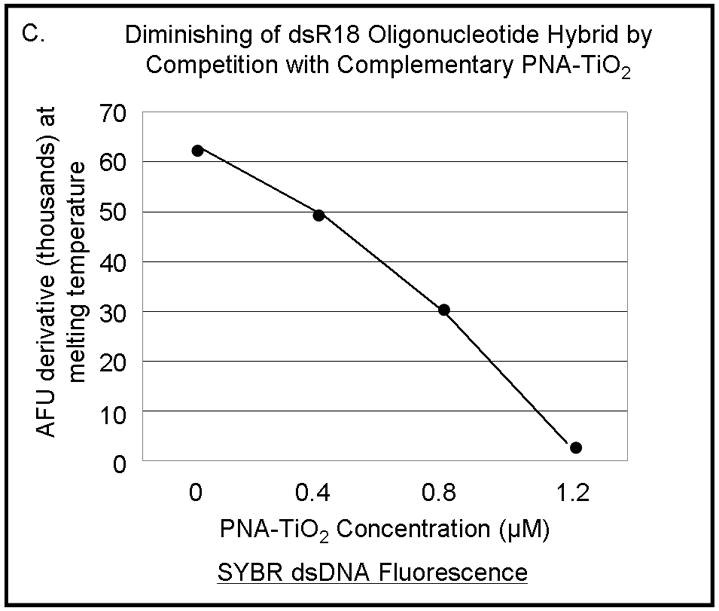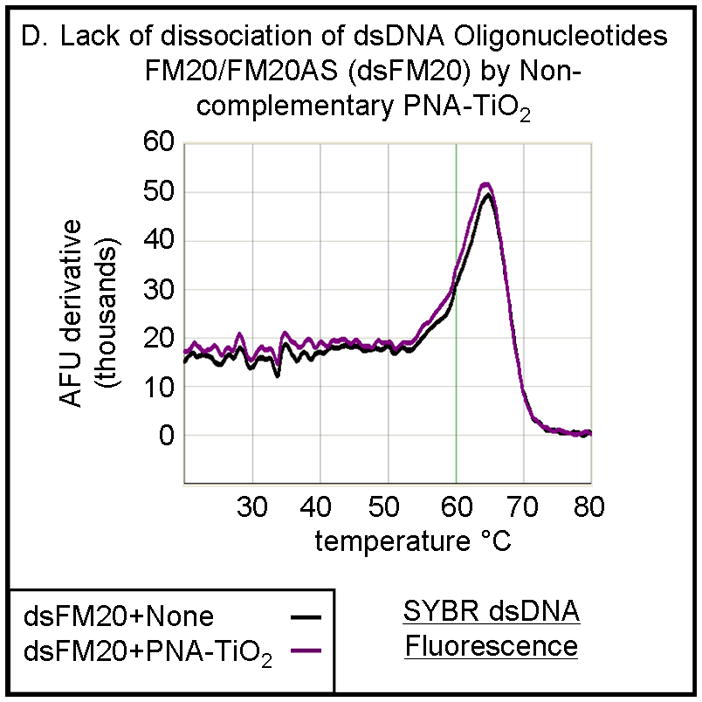Figure 3.




PNA-TiO2 nanoconjugates outcompete (replace) homologous DNA oligonucleotides in formation of the double strand hybrid (labeled R18 when made of two DNA oligonucleotides). (A) Derivative dissociation curves of fluorescence intensities show a well defined Tm peak (indicated by an arrow) for dsDNA hybrids (green), but not PNA:DNA complexes (black); three replicates each. (B) Derivative dissociation curves show a lowering of Tm peak height associated with competition between the homologous DNA strand of dsR18 and PNA or PNA-TiO2 for the same target (complementary DNA oligonucleotide). Black arrows point to the AFU derivative at melting temperature. (C) A graph showing inverse dependence of the peak height for the value of AFU derivative at Tm peak, related to the concentration of TiO2-PNA nanoconjugates added to oligonucleotides creating dsR18 molecules is shown. (D) Representative derivative dissociation curves show no change in the Tm peak intensity when PNA-TiO2 is combined with the non-complementary dsDNA (hybrid of FM20 and FM20AS oligonucleotides, labeled dsFM20). In these and other experiments where Power Sybr Green signal was used for measurements, concentrations of complementary DNA oligonucleotides (r18S and r18AS) were 0.5 μM each, while the nanoconjugate and PNA concentrations were 1 μM. AFU = arbitrary fluorescence units; TiO2 = nanoparticle; TiO2-PNA= TiO2-PNA nanoconjugates
